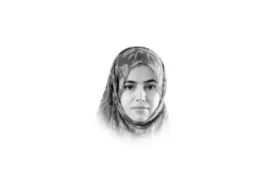
July 11th marks World Population Day, a time to highlight global population issues. In Pakistan, the day is observed with the usual conferences, seminars and events. However, with our persistently high population growth rate straining resources, impeding development and hampering our ability to match the economic strides of our Asian counterparts, there is little to celebrate. Pakistan is often labelled a fragile state, with social indicators, especially in childcare, close to those of sub-Saharan Africa. Despite early investments in population planning, we lag almost all our neighbours in bringing down our fertility rate to sustainable levels.
Today, rather than dwell on our failures, let us focus on avenues of hope and capitalise on tested and impactful strategies to improve the lives of our people, especially in rural areas where access to services is a major challenge. In the 1950s and 60s, China faced issues like ours: a large rural population, poor health infrastructure and significant disparities between urban and rural health indicators. In response, China launched the massive “barefoot doctors” programme, training agricultural workers in basic healthcare, including disease prevention, family planning and management of common illnesses. These community-based doctors became the cornerstone of the Chinese healthcare system, yielding remarkable results and forming the foundation of the primary healthcare model endorsed by the WHO at the 1978 Alma Ata conference. According to Professor Chi-Man of the Harvard School of Public Health, the barefoot doctors programme offers valuable lessons even today for countries striving to achieve universal health coverage, demonstrating that low-cost strategies can yield high outcomes.
In 2006, Pakistan initiated the community midwives (CMWs) programme to provide skilled birth attendance to rural women. They were provided with basic obstetric training and an initial stipend, but they were not inducted into the formal health system and largely left unsupported and unsupervised, causing the programme to falter. In Sindh, CMWs continue to work, though they too face institutional challenges. The Population Council, a research organisation, through a pilot study, demonstrated the potential of these workers, especially in providing much-needed family planning services in rural areas. The Council identified and supported 66 CMWs in two districts of Sindh, providing training, essential equipment, supplies and supervision to enable them to offer comprehensive reproductive health care. Within a year, these midwives assisted 27,000 women with family planning needs and, through the group antenatal care model, launched for the first time in Pakistan, helped women adopt family planning immediately after childbirth.
Like China’s barefoot doctors, Pakistan’s community midwives live within the communities they serve, are trusted by the communities, understand the problems faced by the people, provide affordable services, and often remain the sole healthcare providers, especially during natural calamities such as the periodic floods that the country faces. By enhancing their skills and expanding the range of services they offer, these midwives could become our ‘barefoot doctors’ and a game changer for Pakistan.
Encouraging women to become community midwives can empower rural women and address the human resource shortage in the health sector. This approach offers multiple benefits. It promises improving health outcomes, represents a sustainable path towards balanced population growth, enhances universal health coverage, and ensures community participation in healthcare. By allowing them to work as private practitioners while being regulated through adequate supervision and provision of essential supplies, we can ensure the quality of their services and foster a sustainable public-private partnership model, enhancing the equitable provision of health services.
On this World Population Day, let’s draw inspiration from the successful Sindh model and invest in our community midwives, transforming them into a cornerstone of our healthcare system.









1729685382-0/Untitled-design-(57)1729685382-0-270x192.webp)











COMMENTS
Comments are moderated and generally will be posted if they are on-topic and not abusive.
For more information, please see our Comments FAQ